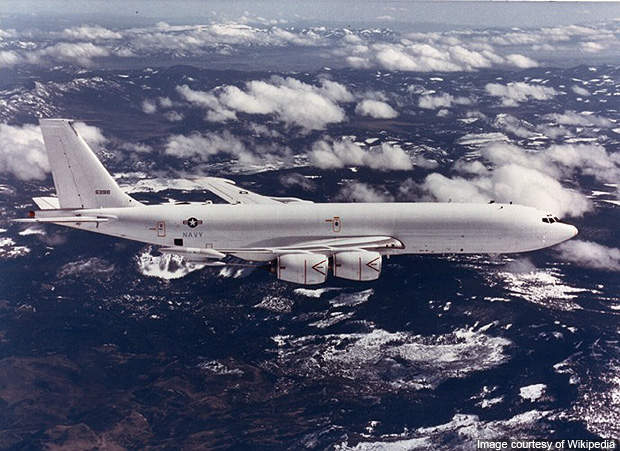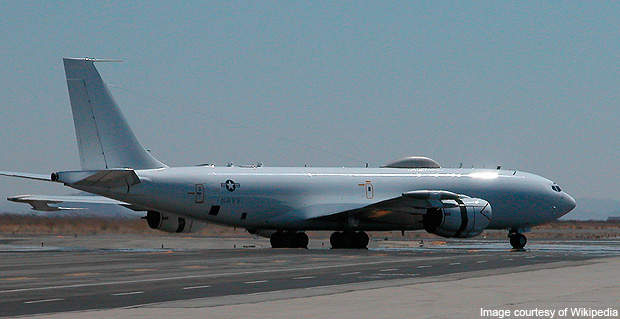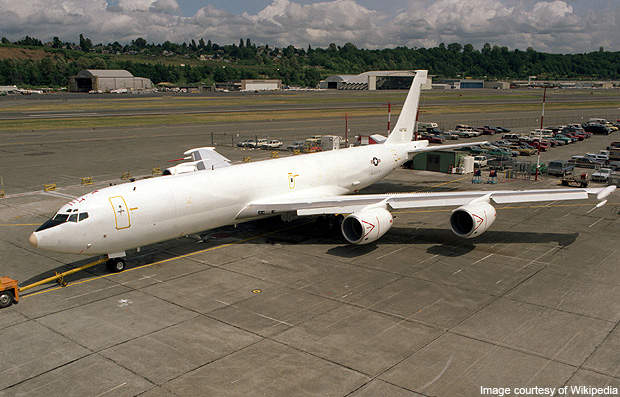The Boeing E-6 Mercury is a command post and communications relay aircraft manufactured by Boeing for the US Navy. The aircraft relays communications for ballistic missile submarine forces and provides airborne command and control for strategic forces. The Navy introduced the E-6 to replace its EC-130Q aircraft
Boeing rolled out the E-6A in December 1986. It completed its maiden flight in February 1987 and was accepted by the Navy in August 1989. The E-6B, a modified version of the E-6A, came into service in December 1997. It was deployed in a dual operational mission in October 1998. The existing E-6 fleet was modified to the E-6B configuration in 2003 and delivered in December 2006.
The E-6B features battle staff positions and an airborne launch control system equipped with land-based intercontinental ballistic missiles.
The aircraft is deployed in TACAMO missions. TACAMO connects the National Command Authority with naval ballistic missile forces during emergency operations. The E-6 provides uninterrupted airborne alert coverage of the Atlantic and Pacific Oceans.
Design
The E-6 is derived from the Boeing 707-320 commercial airliner. The E-6B’s modified design incorporates a battle staff area and new flight deck systems including a 737 next generation cockpit. The wing features a dog-tooth leading edge and trilateral tips. It is equipped with a very low frequency communication system consisting dual trailing wire antennas.
Cockpit
The aircraft is equipped with a cockpit similar to the one installed in the Boeing 737 next generation aircraft. It features six flat-panel digital displays and dual flight management systems.
Command and control systems
The airborne command post was modified by Raytheon E-Systems. The E-6 is equipped with advanced communications and command and control systems. The ALCS uses ultra high-frequency command and control (C3) radios to determine missile status and change missile assignments. The on-board UHF C3 radio subsystem includes three UHF transceivers.
The digital airborne intercommunications switching system integrates an interface control processor, a communications equipment interface unit, a display unit, a bus terminator and other subsystems.
The Military Strategic Tactical And Relay (MILSTAR) airborne terminal system along with the MILSTAR satellite system provides high frequency/super high-frequency/ultra high-frequency communication links. The mission computer system handles and processes information.
Engine
The aircraft is powered by four CFM-56-2A-2 high bypass turbofan engines. Each engine generates 110kN thrust. The dry weight of the engine is 2,190kg. The CFM56-2 consists of a 44-blade tip-shrouded fan and a three-stage low pressure (LP) compressor driven by a four-stage LP turbine. A nine-stage high pressure (HP) compressor is driven by a single-stage HP turbine. The CFM-56 engines also have a low emission combustor and low noise characteristics.
Performance
The E-6B’s maximum speed is 960km/h. It can fly at a maximum altitude of 40,000ft and has a range of 12,144km with a loiter time of six hours. It’s maximum take-off weight is 154,400kg.









